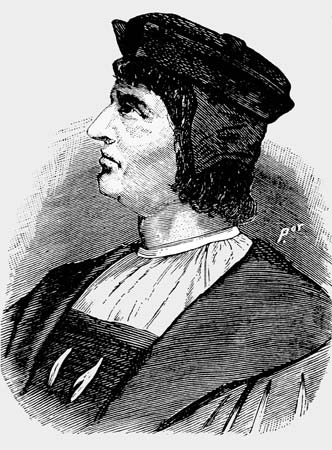This Day in History: March 12, 1488
Additional Date: March 12, 1488
Portuguese navigator Bartholomew Dias erects his first padrÁƒo, or stone cross, at Kwaaihoek near the mouth of the Bushman's River on the Eastern Cape coast. It is South Africa's oldest monument. Bartholomew Dias and the Padroes The first European known to set foot on South African soil was Bartholomew (or Bartolomeu) Dias. Details of his birth and ancestry are unknown, and the first mention of his career as ship captain is in an account of an expedition sent by Portuguese King JoÁƒÂƒo (John) II to Guinea in December 1481. The purpose of the expedition was to build a fort on the coast of present-day Accra in Ghana, known as Fort Elmina. In December 1487 he sailed down the African coast again, landing in among other places present-day Angola and Walvis Bay, Namibia. During this voyage, strong winds forced him to sail over a thousand kilometres off-course, and thus he sailed around the southernmost tip of Africa. On 3 February 1488 he landed in Mossel Bay. Dias and his crew sailed further east until they finally turned back in March at, as some historians believe, the mouth of what is today the Great Fish River. On the return journey, Dias placed three stone crosses, or padrÁƒÂƒÂµes, on the southern African coast. The first of these, the padrao de Sao Gregorio , was erected at Kwaaihoek on 12 March 1488. The second one was called the Padrão de São Filipe , and was erected at Cape Maclear, west of Cape Point, on 6 June. The third, the padrÁƒÂƒo of St James, was placed on the Namibian coast on the 25 July. It is also believed that on their return journey Dias and his crew saw the Cape Peninsula for the first time. It is generally believed that he called it Cabo Tormentoso, or Cape of Storms, and that King JoÁƒÂƒo II then renamed it Cabo de Boa Esperanza, or Cape of Good Hope. Not everybody agrees with this, however, and believes that it was Dias himself who gave the Cape of Good Hope its name. Although historical evidence about Dias's journey is scarce, it is accepted that he arrived back in Portugal in December. The journey lasted 16 months and 17 days. In 1500, on a voyage between Brazil and the east African coast, Dias's ship disappeared during a cyclone. The first padrÁƒÂƒo that Dias erected at Kwaaihoek, near the mouth of the Bushman's River on the eastern Cape coast, is seen as South Africa's oldest monument. Remains of this cross were found in 1938 by Prof. E. Axelson and it was integrated in a reconstructed padrÁƒÂƒo and sent to the University of the Witwatersrand in Johannesburg for safe-keeping. In 1960, a statue of Dias was unveiled in Cape Town.
